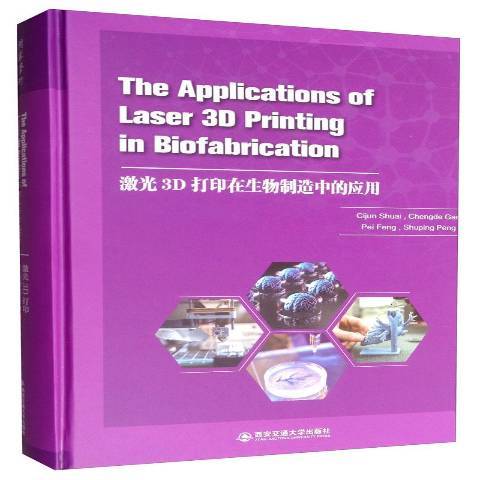內容簡介
It has long been one dream of mankind to repair or reconstruct the defective tissues/organs by using biomedical implants, which have similar shape, structure and function to the natural tissues/organs. As the world's most populous country, China has entered the aging society since the end of the 20th century, and is expected to supplant Japan as the world's most aging country in 2030. The aged is a highrisk and vulnerable population of serious diseases and accidental injuries because of the decline of physiological function, weak control over environment and the phenomenon of "empty nest". As a result, trssue/organ defects are growing rapidly and there has been an ever-increasing demand for biomedical implants. In order to repair the defective tissues/organs, a biomedical implant should not only mimic the material characteristics and gradient structure of the defective sites, but also have sufficient mechanical properties to support cells and withstand complex stresses inthe physiological environment. Meanwhile, the implant should possess controllable degradation rate and favorable osteoinductivity. These complex structures, harsh performance and individual differences put forward great challenges for the fabrication methods of biomedical implants. So far, biomedical implants are fabricated mainly by forging, casting and machining, which requires not only complex molds but also high cost for single-piece production. More importantly, traditional fabrication methods are difficult to obtain the gradient structure and performance of implants. Therefore, it has become a huge challenge to manufacture personalized biomedical implants for the repair and regeneration of defective tissues/organs.
圖書目錄
Chapter Ⅰ Low-dimensional nanomaterials reinforced biomaterials by laser 3D printing
Nanodiamond reinforced polyvinylidene fiuoride/bioglass scaffolds for bone tissue engineering
Graphene oxide as an interface phase between polyetheretherketone and hydroxyapatite fortissue engineering scaffolds
A combined nanostructure constructed by graphene and boron nitride nanotubesreinforces ceramic scaffolds
A space network structure constructed by tetraneedlelike Zn0 whiskers supporting boron nitride nanosheets to enhance comprehensive properties of poly(L-lacti acid) scaffolds
Chapter Ⅱ Oxides reinforced biomaterials by laser 3D printing
Biosilicates scaffolds for bone regeneration: infiuence ofintroducing Sr0
A mesoporous silica composite scaffold: cell behaviors, biomineralization andmechanicalproperties
MgO whiskers reinforced poly (vinylidene fiuoride) scaffolds
Chapter Ⅲ Alloying elements in biomedical metals by laser rapid solidification
Laser rapid solidification improves corrosion behavior of Mg-Zn-Zr alloy
Microstructure evolution and biodegradation behavior oflaser rapid solidified Mg-Al-Zn alloy
Influence of alloying treatment and rapid solidification on the degradation behavior and mechanical properties of Mg
Preparation and characterization of laser-melted Mg-Sn-Zn alloys for biomedical application
Rare earth element yttrium modified Mg-Al-Zn alloy: microstructure, degradation properties andhardness
……
Chapter Ⅳ Liquid phase-assisted densification in laser 3D printing
Chapter Ⅴ Combination of different types of biomaterials by laser 3D printing

